The subdivided columns projects by Micheal Hansmeyer are not only a leap in architectural construction but also in the way we think about design. Through division, Hansmeyer creates wonderful ornate patterns that envelop the space and overwhelms the audience’s sense of detail. So much is happening in that space that it is almost impossible to take in all that detail and comprehend the space. I feel that this level of attention to detail from the artist is very impressive. Hansmeyer employs an algorithm that divides space in order to create these ornate columns. The division allows the plan to create voids. These voids interact with solids to create boundaries. This system developed by division leads to infinite combinations of voids, boundaries, and solids. Since 2010, Hansmeyer has employed this technique in many other works. His work is understood as rule-based architecture that relies on mathematical parameters to build fascinating structures. In Muqarnas, Hansmeyer re-explore 11th century Seljuk dynasty typology through algorithms and rules he set up. This form of generative art allows him to further explore the interaction of space and voids
Category: LookingOutwards-02
Looking Outwards-02

One generative art project I admire is “Traffic Simulation” created by Robert Higgins. His simulation mimics various traffic lights with a multitude of oncoming traffic. What draws my attention to this simulation is his ability to make the interactions (speed, stopping, pausing) of the cars seem very human-like. They do not act simultaneously and in sync, which would not mimic the reality of traffic. The algorithm in this work first laid out its foundation with simple lines and curves fo map out the road on an XZ plane. As the program develops, there must be various statements in the program to determine the car’s behavior depending on the color of the light. The cars are covered in sensors and multiple variables are considered such as aggressiveness. You can see the artist’s creativity throughout this project in his ability to recreate human-like traffic interactions, as well as his choice of color and sleek design.
Traffic Simulation | Robert Hodgin | Jan. 2020
LO 2 – Generative Art; Bone Chair
At its surface, generative art doesn’t mean much to me. As a design-oriented person, I appreciate beautiful things, yet they are most meaningful to me when they are rooted in some practical function. However, I have found an example of generative art that provides enough practical use to satisfy me – Joris Laarman’s ‘Bone Chair’.
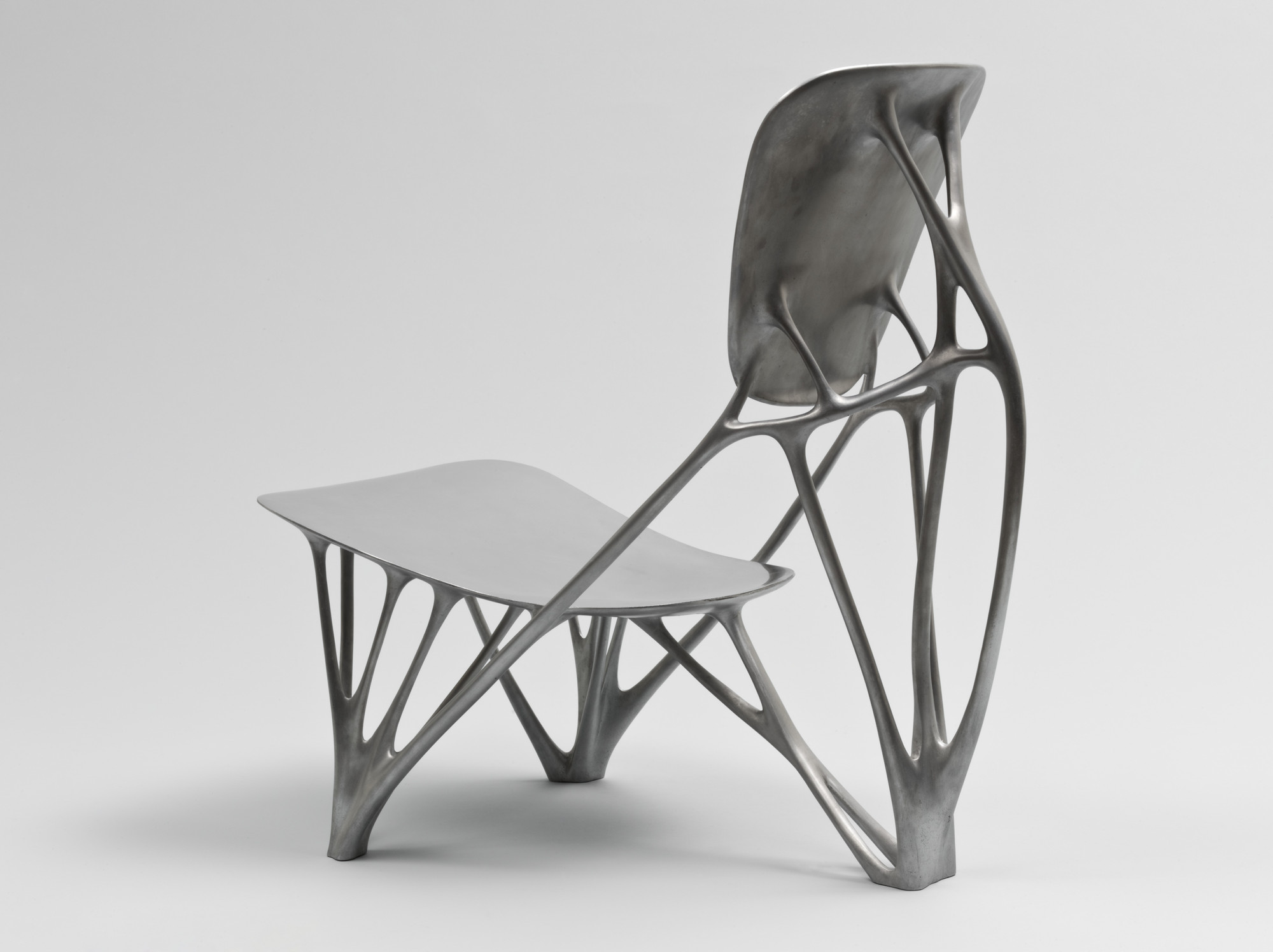
This chair is a piece of furniture resulting from a specially designed computer algorithm, used to structure supports in a way that mimics the natural growth of bones and trees. Starting with a chunk of material and virtually applied forces, the algorithm slowly removes material where it is not structurally significant, leaving behind only the most essential material for the given position of the furniture. As you might imagine, the final product feels machine-made in its precision and finish. However, this sculpting technique effectively captures the innate beauty of natural, irregular structures while simultaneously ensuring comfort and strong support. This algorithm draws me to the world of algorithmic art, since it shows me how digitally crafted art does not have to feel unnatural or impractical – if anything, it can streamline the integration of biomimicry into common objects around us in unexpected ways. And that, I find very exciting.
Looking Outwards 2- Generative Art
The work of generative art I chose to analyze is called SV15 by Lia, an Australian artist . Her main concept is being fluid with what her machine generates, and not relying strictly on hard rules for her code. Her work has a minimalist quality, and turns her inspirations into abstract colors and forms. In her project SV15, I admire the aspect of fluidity in her work. This work is installed at Que US Bank Tower in Los Angeles, and it has an interactive component of movement that engages viewers when they enter the lobby. Additionally, there are layered shapes and varying opacities that ripple and overlap, and almost appear to be “blooming” when in motion, which creates a calming and relaxed feel.
In terms of the algorithm itself, Lia probably used in her code a varying component or a random feature. She also must have used some loop functions that repeat and run the code so that the movement of the artwork continues to repeat itself. Additionally, her algorithm must have consisted of several values, highlights, and shadows of different blues. Opacity must have also been considered because her shapes overlap and create new overlays of color in her artwork when they move.
Lia’s work is really unique and I enjoy her abstract qualities. Her work sets a professional, modern, and sophisticated tone for the environment that it is installed, and the pace of the movement in the artwork reflects the natural pace at which people and workers walk through the lobby of the bank. As an artist, her sensibilities were to make people feel at ease instead of stressed, and her generative artwork nicely creates that for people through her intentional use of color, and soft radiating movement of shapes.
Looking Outwards 02 – Generative Art
For this blog, I’m looking at Michael Hansmeyer’s Subdivided Columns. I’ve always been enmeshed in ancient Greek architecture, and the notion of a new order of columns based on subdivision processes intrigued me. Of course we’re always adding to and building onto the work of our predecessors, but does this art do that or does it create a new thing entirely? After looking into it, I admire that this project seems to do both. You begin with the basic doric column, and abstract it. As far as I can tell, the way this piece works is, using an input form, you can detail information about the column’s shaft, capital, base, fluting, and entasis. According to the website, “the architect effectively designs a process that produces a column, rather than designing a column directly.” Michael Hansmeyer’s hand is still clear in these computer-generated columns. The intricate patterns of almost-recognizable figures and the detailed texturing work that traverses the whole length of the columns are distinctive to his style.
Looking Outwards 02
As digital fabrication tools get more and more sophisticated, there’s been calls for the field of architecture to keep up with the technology. Digital fabrication tools and computer algorithms come hand in hand, not only do computer algorithms help the tools realize the physical objects, the algorithms can also help designers and architects visualize and imagine previously impossible geometries. Michael Hansmeyer, a classically trained, architect, walks at the forefront of this endeavor. In is installation Digital Grotesque I, Hansmeyer explore the the expressive formal potentials of digital technologies, the forms, generated by a series of algorithms consists of 260 million geometric facets, an impossible feat via regular explicit modelling. What’s interesting about this is that, the algorithm, other than interpreting classical architectural forms, adds another layer of detail and complexity to it by exploring, ideas such as permutations and infinite scales. The artist demonstrates this on his website with a 3d model of the actual installation, where the piece itself can be zoom in infinitely. An exploration of fractals and endless permutations. Although the idea of infinite is limited by reality and our fabrication abilities and resolution, it is still without a doubt an interesting concept to explore at an architectural scale, that has been thought over by generations of architects. Although it is now, just a slight bit closer to reality, Hansmeyer’s piece can still only capped at a certain resolution. There is still much to discover through the lens of generative design.

Looking Outwards-02
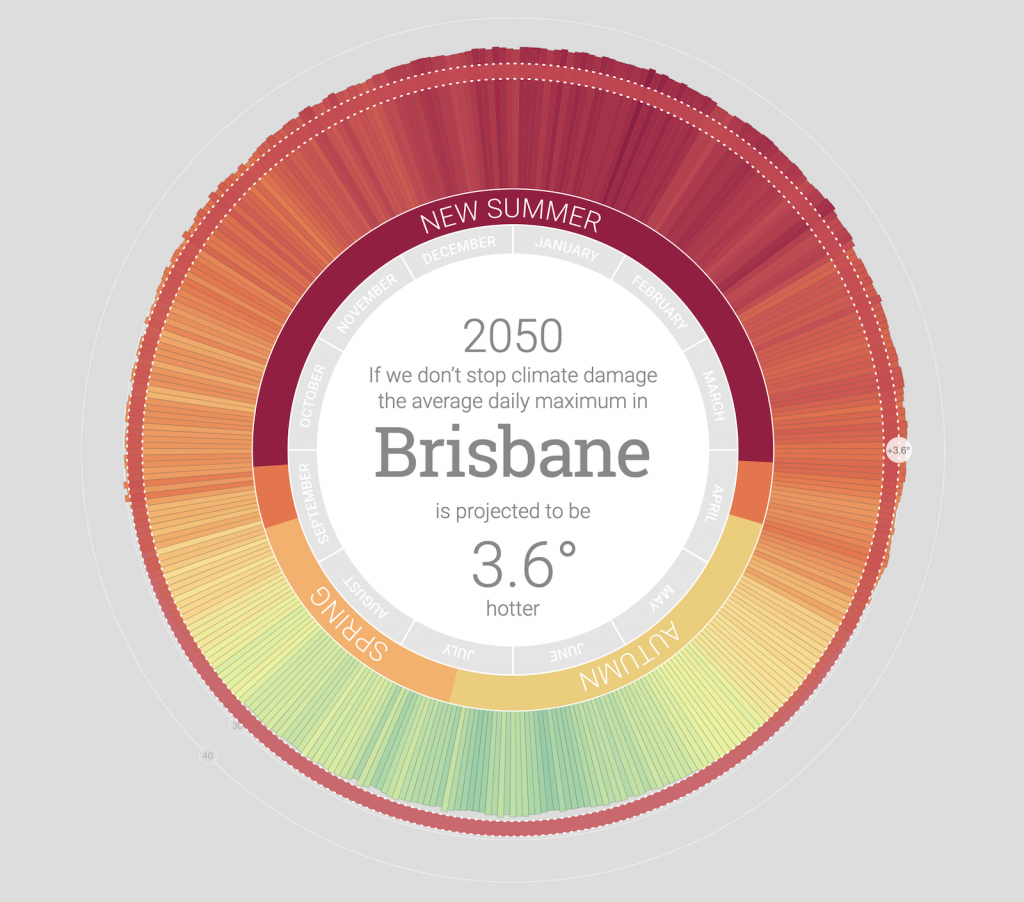
This project by Mitchell Whitelaw is called the “My Climate 2050” project created in December 2018. It generates a visualization tool in Australia that visualizes the impacts of climate change of local areas. The project uses the datasets from the government and climate institutes, which contains around 4700 data projections about the temperature, seasonality, etc. The project reveals that at almost all of the recorded locations, the average temperature year-round is increasing, which signifies an alarming phenomenon of extended summer periods.
I think that the visuals and aesthetics of this tool is effective because of the display of colors and details. I am inspired by this because of how generative art like this can be really useful for our understanding of the climate crisis right now.
Dillenberger, Hansmeyer, And the Parametric Grotto
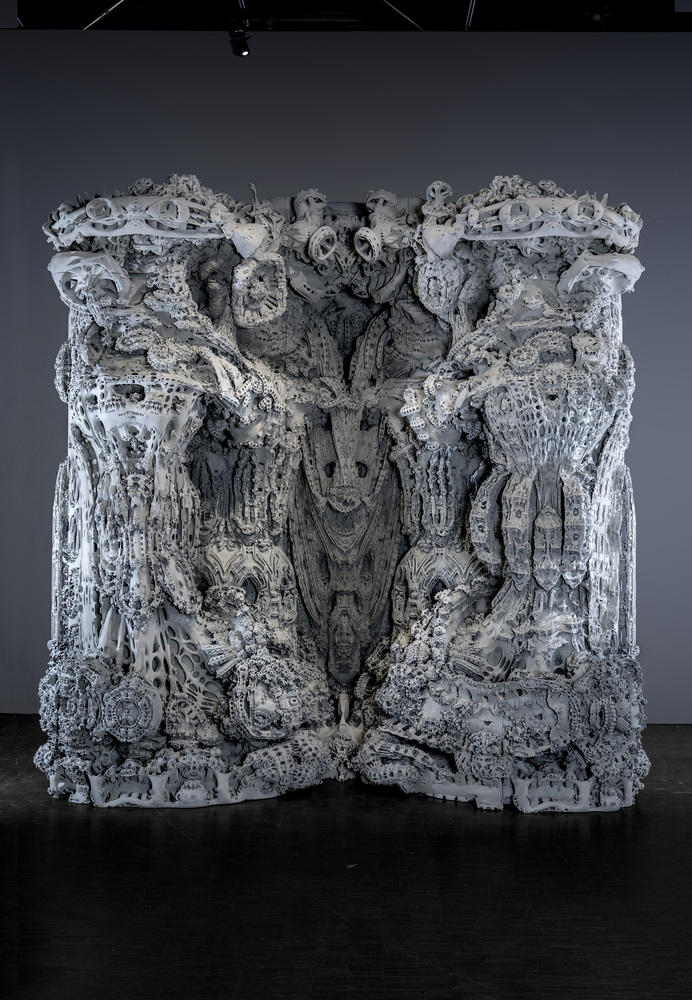
Dillenberger & Hansmeyer’s 3D printer grotto is a perfect representation of that possibilities that computation and digital fabrication can bring to architecture. Inhumanly complex and detailed, its Gaudi-esque surface was generated using algorithms and built in sandstone using 3D printers. It leaves the limitations of the human ability to craft and even to design in the dust, relying purely on the now super-human abilities of our machines.
Works such as this one inevitably force people like me to ask hard questions about what design is worth. These algorithms and machines designed and built an object much more complex than I ever could, even given another thirty years to master design and a team of master stonemasons to work with. If this is what can be done with machines alone, what in what space are people like me left to work?
-Robert
LO – 02 (Generative Art)
For this week’s LO, I took a closer look at Collider by Robert Hodgin, who does a lot of work in 3D terrain simulations like this one. The concept behind the project is exploring a simulated particle system interacting with a universal gravitational force that is coded in.
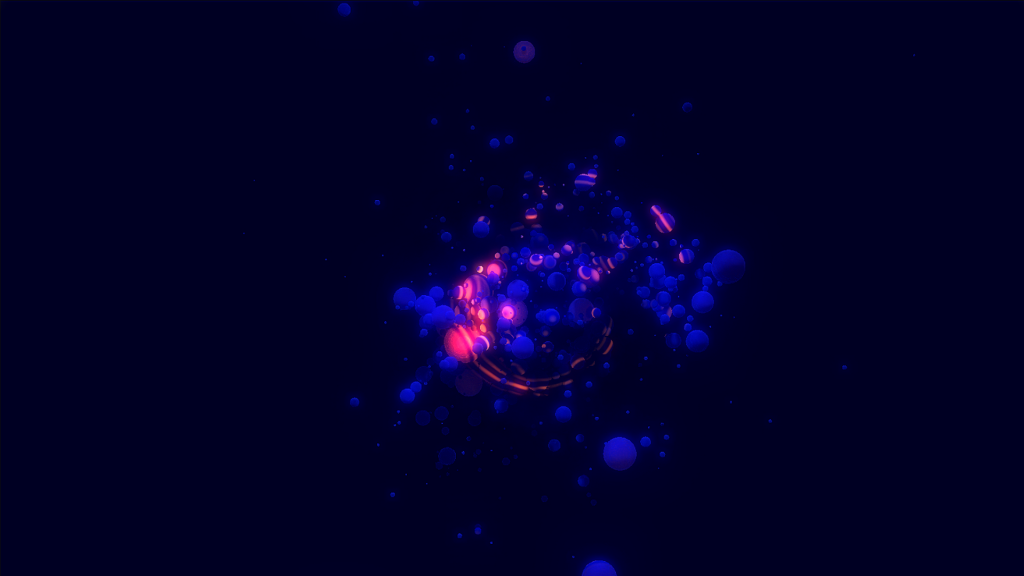
I really enjoyed the way that this project took a simple physics concept and was able to visualize it in such a beautiful way to show the intersection between scientific and visual methods of communicating information. Not only is it visually pleasing to look at, it also demonstrates the theories of universal gravitation in a tangibly interactive way.
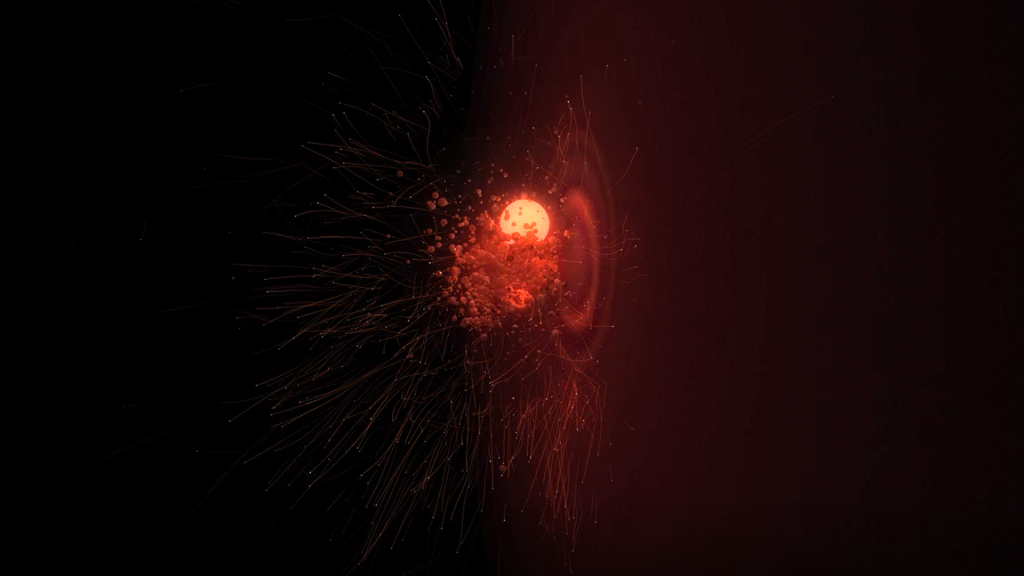
Robert Hodgin’s work is primarily done in Houdini and C++, for which he is a co-creator of Cinder C++, a free open-source library designed to be a resource for endeavors of creative coding in the aforementioned language.
Looking Outwards-02
See Project Here: http://www.generative-gestaltung.de/2/sketches/?01_P/P_3_1_3_05
See Code Here: https://editor.p5js.org/generative-design/sketches/P_3_1_3_05
This project was made by Niels Poldervaart!
This project is particularly inspiring to me because it uses generative design to explore the relationships between a full text and the individual words which compose it. This project uses visual and interaction design to help people understand the connections between words and the grammar that is behind it all. Understanding the code libraries used to decipher these parts of speech could be really useful for education purposes of teaching grammar and parts of speech.
The algorithm was written in p5.js and used RiTa to analyze the text for parts of speech. The code is based off of for loops, some conditionals, and a lot of variables yet is quite easy to understand. I was shocked to see that something so intricate and complex (to me) was written in only 215 lines of code.
In this work you can see the artist’s love for type and linguistics show through (which aligns with my interests as well!). There are a couple other versions of this concept where they do similar explorations of discourse and individual letters/words shown with different visual configurations. You can really see their understanding and love of visualizing data with simple yet effective methods of type and color.
![[OLD FALL 2020] 15-104 • Introduction to Computing for Creative Practice](https://courses.ideate.cmu.edu/15-104/f2020/wp-content/uploads/2021/09/stop-banner.png)